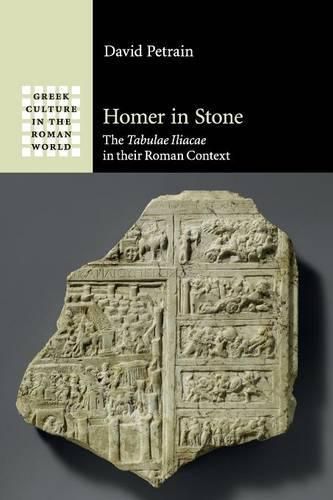Readings Newsletter
Become a Readings Member to make your shopping experience even easier.
Sign in or sign up for free!
You’re not far away from qualifying for FREE standard shipping within Australia
You’ve qualified for FREE standard shipping within Australia
The cart is loading…






The Tabulae Iliacae are a group of carved stone plaques created in the context of early Imperial Rome that use miniature images and text to retell stories from Greek myth and history - chief among them Homer’s Iliad and the fall of Troy. In this book, Professor Petrain moves beyond the narrow focus on the literary and iconographic sources of the Tabulae that has characterized earlier scholarship. Drawing on ancient and modern theories of narrative, he explores instead how the tablets transfer the Troy saga across both medium and culture as they create a system of visual storytelling that relies on the values and viewing habits of Roman viewers. The book comprehensively situates the tablets in the urban fabric of Augustan Rome. New photographs of the tablets, together with re-editions and translations of key inscriptions, offer a new, clearer view of these remarkable documents of the Roman appropriation of Greek epic.
$9.00 standard shipping within Australia
FREE standard shipping within Australia for orders over $100.00
Express & International shipping calculated at checkout
The Tabulae Iliacae are a group of carved stone plaques created in the context of early Imperial Rome that use miniature images and text to retell stories from Greek myth and history - chief among them Homer’s Iliad and the fall of Troy. In this book, Professor Petrain moves beyond the narrow focus on the literary and iconographic sources of the Tabulae that has characterized earlier scholarship. Drawing on ancient and modern theories of narrative, he explores instead how the tablets transfer the Troy saga across both medium and culture as they create a system of visual storytelling that relies on the values and viewing habits of Roman viewers. The book comprehensively situates the tablets in the urban fabric of Augustan Rome. New photographs of the tablets, together with re-editions and translations of key inscriptions, offer a new, clearer view of these remarkable documents of the Roman appropriation of Greek epic.